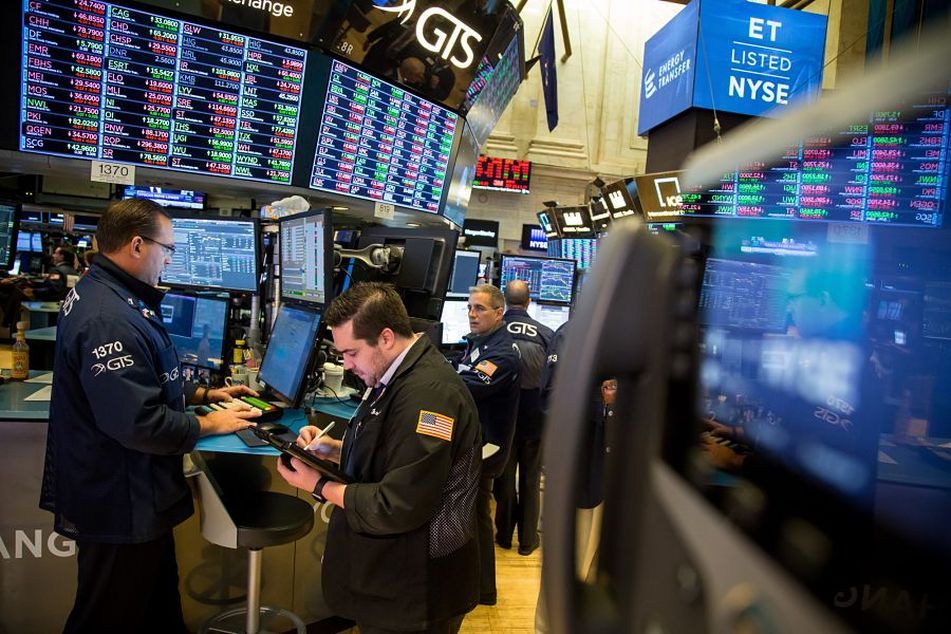How mid-cap growth funds owned the first quarter
 Traders work on the floor of the New York Stock Exchange (NYSE) in New York, U.S. Photographer: Michael Nagle/Bloomberg
Traders work on the floor of the New York Stock Exchange (NYSE) in New York, U.S. Photographer: Michael Nagle/Bloomberg
Investors who stayed put during the fourth-quarter market meltdown were rewarded by mid-cap managers.
The often overlooked and under-allocated mid-cap growth fund category cranked out one of its rare high notes during the first three months of 2019, with an 18.4% return that beat the eight other equity style boxes.
Mid-cap growth’s performance compares to the 13.6% gain by the S&P 500 Index during the quarter and an 11.3% gain for the large-cap growth fund category, as tracked by Morningstar.
But what is most interesting about the first-quarter mid-cap performance is the way it led the rebound from the fourth quarter, when the S&P 500 lost 13.4%.
“This is the first time in four quarters that mid-cap funds have finished on top,” said Tom Roseen, head of research services at Lipper.
According to Mr. Roseen, mid-cap growth funds last beat out all other domestic equity fund categories in the first quarter of 2018, when the category eked out a 24-basis-point return. Prior to that, mid-cap growth funds beat all other categories in the first quarter of 2016 with a 34-basis point return.
Mid-cap funds, which typically invest in companies with market capitalizations of between $2 billion and $20 billion, are sometimes overshadowed by the much larger and higher-profile large-cap strategies and the higher-performing small-cap strategies.
Matthew Weatherbie, co-manager of the $451 million Alger SMid Cap Focus Fund (ASMZX), said he didn’t do anything different on his way to leading all other funds in Morningstar’s mid-cap growth category with a 31.3% first-quarter gain.
“We’re trying to capture what we think are outstanding smaller-cap growth companies during periods of dynamic growth,” he said.
Sticking to the process and looking past near-term market volatility is likely what helped mid-cap managers recover so strongly from the category’s average fourth-quarter decline of 17%.
“The first quarter was almost the inverse of what happened in the fourth quarter, when it seemed like people thought the world was ending,” said Donald Easley, co-portfolio manager along with Donald Peters of the $1.2 billion T. Rowe Price Diversified Mid Cap Growth Fund (PRDMX).
The fund gained 19.4% in the first quarter.
“I don’t know what to make of it all, and we don’t expect to be up 19% every quarter,” Mr. Easley said. “We’ve looked at this over a 40-year period, and what’s great about mid-caps is they offer superior risk return versus both large caps and small caps. We’ve just always thought mid-caps offer the sweet spot of the market.”
That sweet spot, however can be vast.
Mr. Weatherbie, whose strategy is designed as a blend of small- and mid-cap companies, said he will buy companies with market caps of $2.5 billion and let those companies grow to the $15 billion range.
Mr. Easley, who more closely follows the capitalizations of the companies making up the Russell MidCap Index, starts buying companies when they reach $3.5 billion and tops out at $30 billion.
Flexibility could be the secret weapon of mid-cap managers, said Todd Rosenbluth, director of mutual fund and ETF research at CFRA.
“Investors were rewarded for risk-taking in the first quarter,” he said. “The active managers have the flexibility to hold onto some winners, and mid-cap growth has been heavily leaning toward technology and health care.”
Mr. Roseen of Lipper said technology contributed to the recent wild ride by mid-cap growth funds.
His analysis of a proportionally weighted index of the underlying positions of all the actively managed mid-cap growth funds shows a third of the first-quarter return can be attributed to technology stocks. Among the holdings, Mr. Roseen noted the 48% first-quarter return posted by Worldpay Inc. (WP), the 46% gain in Zendesk Inc. (ZEN), and the 70% gain in The Trade Desk Inc. (TTD).
Chris Franz, an analyst at Morningstar, said the first-quarter rebound was broad and sweeping, with consumer staples’ 7.44% gain representing the worst-performing sector in the Russell mid-cap index.
“There was a massive sell-off in the fourth quarter, and as long as investors were willing to sit through it, they were in good shape,” he said.
(More: Demand for growth stocks produces record inflows for ETF)
Learn more about reprints and licensing for this article.








